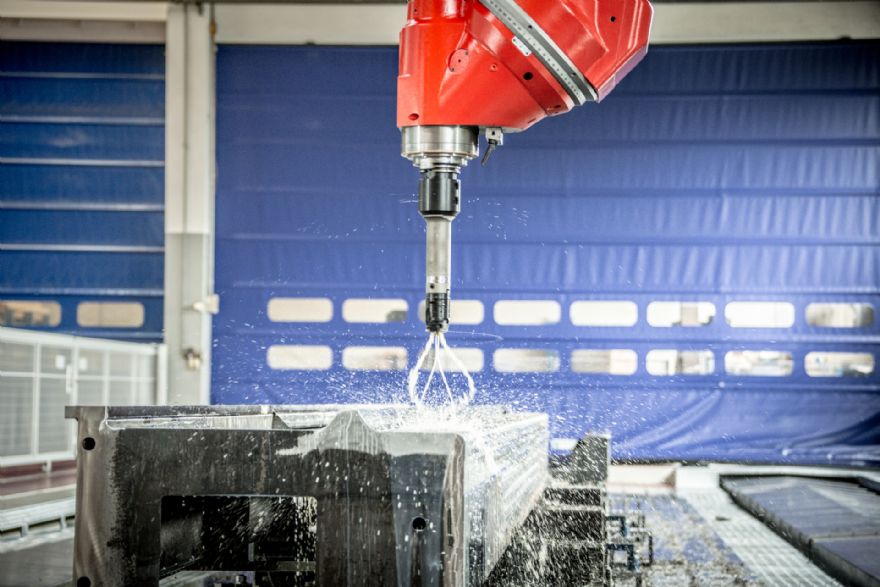
The UK manufacturing sector saw a further solid increase in production volumes at the end of the third quarter. Output and new orders both continued to rise, as the domestic market remained the main driver of growth. There were signs of a wait-and-see approach entering decision-making, however, with the forthcoming Autumn Statement in particular leading to slower gains in both production and new business and a dip in future expectations to a nine-month low.
The seasonally adjusted
S&P Global UK Manufacturing Purchasing Managers’ Index (PMI) posted 51.5 in September, down from August’s 26-month high of 52.5 and unchanged from the earlier flash estimate. The PMI has remained above the neutral 50.0 mark for five successive months. Three out of the five PMI sub-components – output, new orders and suppliers' delivery times – were at levels consistent with improved manufacturing operating conditions.
In contrast, levels of employment and stocks of purchases both declined, as manufacturers looked to mitigate rising input costs by reducing expenditures in other areas. Manufacturing production rose for the fifth consecutive month in September, as companies responded to improved intakes of new work. The main drivers of the latest expansion were the consumer and intermediate goods sectors, both of which registered stronger increases in output and new business. In a reversal of fortunes, the investment goods sector (which had been the best performing sub-industry in recent months) slipped back into contraction, with production and new work inflows contracting for the first time in five months.
September data signalled a further decrease in incoming new export business, the 32nd in as many months. UK manufacturers reported that subdued market conditions in Europe were the main factor weighing on overseas demand, with France and Germany the principal concerns. Lower demand from clients in the USA was also cited.
Signs of rising uncertaintyThere were signs of rising uncertainty at manufacturers and their clients impacting on a number of variables in September. Along with the mildly slower rises in new orders and output compared to August, there was also a sharp easing in the level of confidence regarding future production trends. Cuts to employment, purchasing activity and stocks at manufacturers also pointed to rising cost-caution.
Rob Dobson, director at S&P Global Market Intelligence, said: “The UK manufacturing sector is still expanding at a solid, albeit slightly slower, pace. Output rose for the fifth successive month in September, underpinned by a resilient domestic market. However, manufacturers have become more nervous about the outlook, suggesting that the current spell of impressive growth is fading, with business optimism about the year-ahead slumping to a nine-month low.
“The extent of the drop in confidence was striking, beaten only by that seen in March 2020 prior to Covid-19 lockdowns. Uncertainty about the direction of Government policy ahead of the coming Autumn Budget was a clear cause of the loss of confidence, especially given recent gloomy messaging, though firms are also worried about wider global geopolitical issues and economic growth risks.
“Price pressures are also becoming a more prominent feature of the survey and a reminder that the inflation genie is not yet back in the bottle. Input cost inflation accelerated to a 20-month high, leading manufacturers to further push up their selling prices. Freight cost rises are a big factor underlying the resurgence in the price measures, as supply chains continue to feel the strain of the Red Sea crisis and global conflicts.”
Solid footingChris Barlow, head of manufacturing at
MHA, commented: “Today’s manufacturing PMI data shows a slight decrease in activity, which was expected by the market and reflects what we are hearing on the ground from our clients. Substantial challenges still remain for the sector as we head into the autumn, but the sector is now on a more solid footing. While interest rates are on a downward trajectory, the cut is unlikely to have had a major impact on the sector just yet. Rates are high in comparison to many other major markets and there is uncertainty around when the next cut may happen, impeding manufacturers desire to spend or invest.
“The Government’s recent announcement on the increase in public sector wages will also be playing on the minds of private sector employers. If there is yet another hike in the minimum wage in this month’s Budget, questions will be asked how and will they be able to pass the costs on. On the other hand, the announcement of a new Industrial Strategy is certainly welcome news for the sector; however, as always, the devil will be in the detail. Whether an existing minister is chosen to lead the strategy or there is a new minister for manufacturing, the strategy needs to be actioned and pushed forward. The issues of skills, supply chain challenges and R&D also need to be addressed.
“The reforms announced to the apprenticeship systems will certainly help to alleviate some of the skills challenges the sector is facing. However, we will have to wait and see if this is going to achieve the desired results. Now is not the time for short-term incentives but long-term planning that encourages the manufacturing sector and incentivises investment from abroad.”